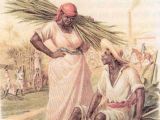First news of havaneres
Nowadays to put a date to the earliest havaneres is without any doubt, a very complicated task. It is through the witten pres that we can know when a piece was published, but not the year when it was created. Until now, the earliest piece which, according to musicologists, can be named as havanera, is El Abufar which appeared in La Habana press in 1829. In Mexico, where the havanera was introduced around mid 19thC through the Vera Cruz State and the Yucatán Peninsula, appeared according to otto Mayer, La Pimienta, a country dance of Cuban inspiration in the Noticioso de Ambos Mundos, in 1836. The Oxford Dictionary of Music dates the composition El Arreglito, the havanera tempo piece from the Basque composer Sebastián Iradier, in 1840 and published in Paris with the quotation chanson havanaise, also famous for being plagiarized by Georges Bizet in the havanera that appeared in the first act of his famous opera Carmen. Two yeras later, in 1842, the musicologist Zolia Lapique, dated the piece El amor en el baile in the newspaper La Prensa, on the 13th November of that same year. In Spain, according to the ethnograph Joaquín Díaz, La Canción del corregidor y la molinera, edited in folding cane and streamer format around 1817, was probably sung like a havanera.
The most international of all the havaneres, probably the most famous of all, La Paloma, from Sebastián Iradier, was premiered at La Habana in 1855 by the contralto Marietta alboni under the direction of the author himself. The work was edited/published in Madrid and printed with the following subtitle: canción americana a dos voces con un poquito de trigueña y caramelo, and not as a havanera, like it happened with the French edition (chanson havanaise). Iradier, author of several successful havaneres in Cuba, Spain and France (El chin chin chan, Las Amonestaciones...), dedicated La Paloma to his friend and disciple Nicolás de Zubiría.
In 1892, as Alejo Carpentier defined, there was the first great world wide best seller of the latin american music, the appearance of the havanera Tú.. The work, from the composer Eduardo Sánchez de Fuentes and lyrics from Fernán Sánchez, was published in 1894 through a contract with the owner of the Chemist's San José, Antonio González, thanks to whom the author received around 600 copies. The researcher Teresa Pérez daniel assures that during the Cuban War in 1895 it became to be considered like a Cuban hymn, with the name of Cuba and that it was even sung by both sides, the Spainish soldiers and the Cuban rebels. The havanera was very successful in te Peninsula although the lyrics of the composition were modified. In Cadiz, the lyrics of the song were dedicated to the city itself and in Catalonia, where it was called Tecla, it was dedicated to a mulatta who probably fell in love with a Catalanman.
The first recorded piece written in Catalan which we have knowledge about, was edited edited in New York in 1875. The piece with havanera rythm, La Flor de las Criollas, from the composer Ranieri Vilanova, was published in the magazine La Llumanera (april 1875, number 6), directed by Artur Cuyàs from Barcelona, and owned by Catalan people with several businesses in the island.

